Known for the trademark ridge that runs along their spines, Rhodesian ridgebacks are an independent, strong, and faithful breed. Learn more about living with Rhodesian ridgebacks.
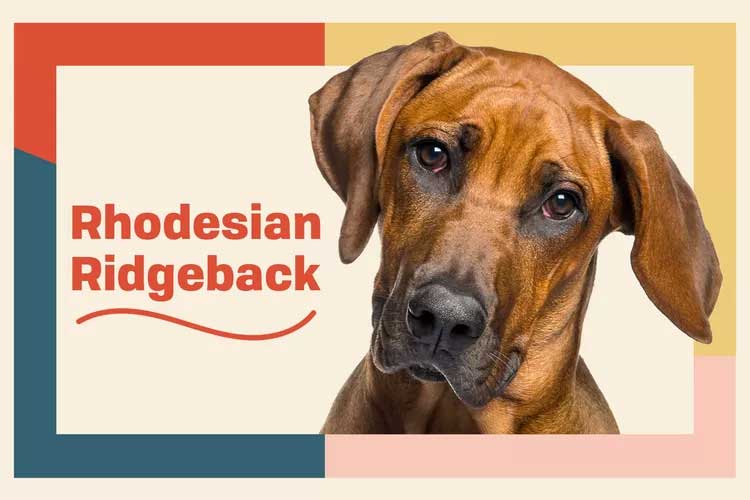
Rhodesian Ridgeback Overview
| OFFICIAL NAME | Rhodesian Ridgeback |
| COMMON NAME | Rhodesian Ridgeback |
| PET HEIGHT | 24 to 27 inches |
| PET WEIGHT | 70 to 90 pounds |
| LIFESPAN | 10 to 10 years |
| GOOD WITH | cats, children, dogs, families |
| TEMPERAMENT | aloof, playful, willful |
| INTELLIGENCE | high |
| SHEDDING AMOUNT | occasional |
| EXERCISE NEEDS | medium |
| ENERGY LEVEL | active |
| VOCAL LEVEL | infrequent |
| DROOL AMOUNT | low |
| BREED GROUP | hound |
| BREED SIZE | large (61-100 lbs.) |
| COAT LENGTH | short |
| COLORS | gold / yellow, red |
| OTHER TRAITS | easy to groom, high prey drive, hot weather tolerant, strong loyalty tendencies |
It's hard to get more literal than the Rhodesian ridgeback: a dog with a ridge of hair that extends down his spine. But beyond the hairstyle, the ridgeback is an independent, strong, and faithful breed. These medium- to large-sized African hounds were originally bred to protect their families and distract lions. The Rhodesian ridgeback is known for his independent personality and strong will, which might make him difficult for the novice owner to handle. But with positivity and patience, you'll have a loyal family dog.
Appearance
Once known as the African lion hound, the Rhodesian ridgeback hails from southern Africa. Male dogs weigh around 85 pounds while female ridgebacks are smaller, at around 70 pounds. The line of hair growing the opposite direction down their spines—almost a mohawk—puts the "ridge" in "ridgeback."
This powerful, no-frills breed has a short, low-maintenance coat that comes in shades of one color only—wheaten—though some Rhodesian ridgebacks have black masks or white markings on their chest and toes. They can have black or brown noses and always have kind, intelligent eyes in shades of amber or brown.
Temperament
Rhodesian ridgebacks are known for their dignified and strong-willed personality, which requires a lot of guidance from an experienced and patient owner. When well trained and cared for, Rhodesian ridgebacks are incredibly faithful and affectionate with their owner, but they will usually tend to be aloof toward strangers."Rhodesian ridgebacks are not for a novice owner," says Brian Kilcommons, founder of The Great Pets Resort, a boutique training facility in Connecticut. "These dogs were bred to track lions and hold them at bay, and they're fast enough that the cat can't get them. They're a hound, they're hunters, so they're going to be predatory. When they see movement, they're going to want to chase."
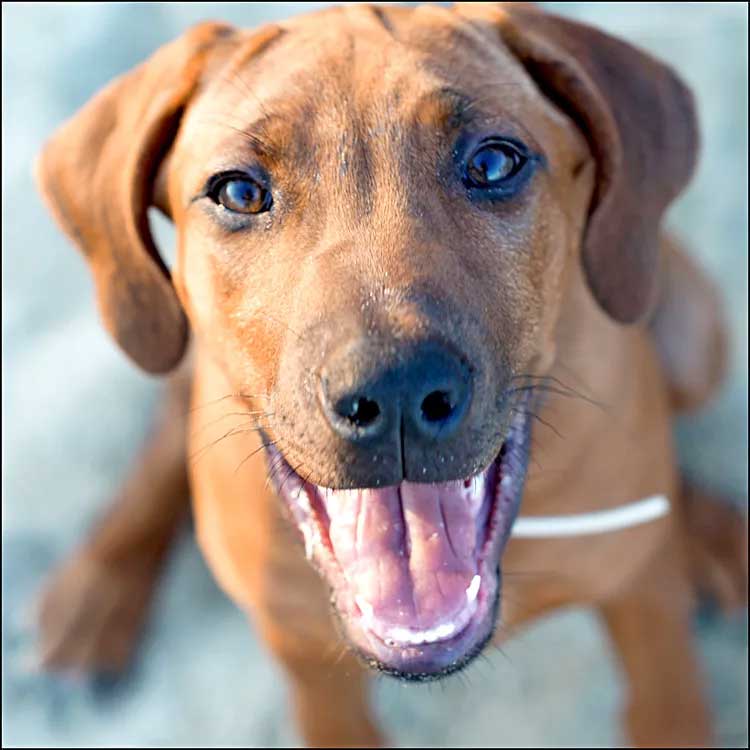
Though an intelligent breed, the Rhodesian ridgeback's independence can make training tricky. It's important to begin training your Rhodesian ridgeback immediately—as soon as you bring him home—using a positive-reinforcement method. Enrolling in a puppy class can be a great way to add socialization—and distractions—to your training routine.
As with any breed, it's important to properly socialize your Rhodesian ridgeback puppy from a young age. Exposing your dog to various sights, sounds, people, and animals will help him grow up to be a well-adjusted and confident adult. "The temperament varies in this breed, and fear can be more of a problem," Kilcommons says.
Rhodesian ridgebacks are extremely loyal to those they love. They are patient and kind with kids, but smaller children run the risk of being knocked over if your ridgeback gets too rambunctious. It's important to teach children how to properly interact with dogs and always supervise them when playing with any dog.
Living Needs
Rhodesian ridgebacks can be "too much hound" for a lot of people to handle. Bred to hunt, they have a very high prey drive and should always be kept on leash or in a secure fenced-in area. These pups were bred to out-maneuver the kings of the jungle, so running after them if they get loose likely won't go well for you. Because they're so quick on their paws, it's important all owners get their ridgeback microchipped.Though considered a high-energy breed, the Rhodesian ridgeback is fairly adaptable to most living situations—including apartments—so long as they get out enough for a moderate amount of exercise. "Having the time to properly exercise a Rhodesian is key," Kilcommons says. "They're very active and can [develop undesirable behaviors] if they aren't exercised or entertained."
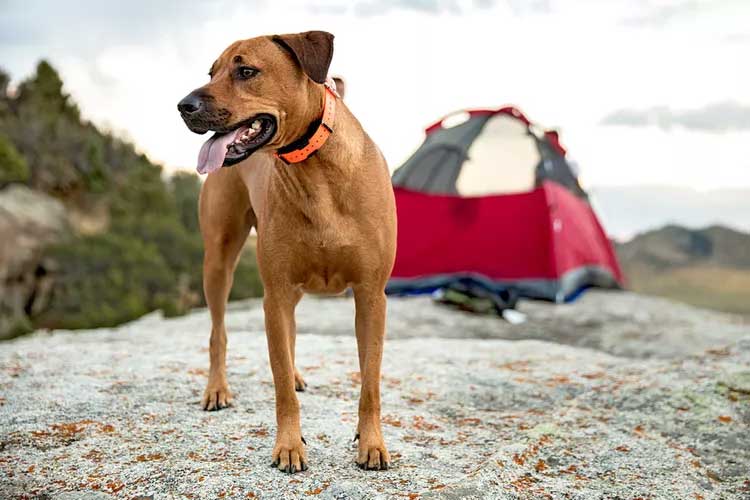
They make great hiking and running partners, but they are just as satisfied with a long walk followed by a rigorous play session with their owners. They are extremely faithful and rely on a strong companion bond.
The ideal home for a Rhodesian ridgeback has a large, physically fenced-in yard where he would be the only pet. Though they can be brought up to get along with other dogs, small animals—such as cats—will most likely be seen as prey.
Their strong personalities and independent will can test even the most experienced dog owners, and Rhodesians need mental stimulation to be happy. Their best partner: an experienced owner looking for an active companion to join them through their daily lives.
It's important to consider your lifestyle before committing to any dog. Talk to a Rhodesian ridgeback breeder or rescue group about expectations to see if a Rhodesian ridgeback is a good fit for you.
Care
Rhodesian ridgebacks are low maintenance when it comes to grooming. Their short coats require simple weekly brushing to remove loose dead hair and keep a healthy shine, but they won't need more than an occasional bath. Some Rhodesian ridgebacks can be sensitive—and resistant—to grooming, especially nail trimming. It's important to start weekly grooming practices at a young age, which will help your dog become comfortable when handled. Nails should be trimmed if you can hear them tapping against the floor. If your Rhodesian ridgebacks resists nail clippers, a nail grinder may have better results.Regular brushing is also a good time to check for things like coat sheen (dull hair can mean a lack of nutrients in his diet), nail length, and ear and dental health. Ear canals should be pale pink with very little—and fairly odorless—wax. Be sure to look for any signs of movement (mites!) and foreign objects in the canal, especially if you and your dog spend a lot of time outdoors or have recently been in tall grasses. And while regular at-home care is important to your Rhodesian ridgeback's health, this doesn't replace a visit to the veterinarian. Always reach out to your vet with any concerns.
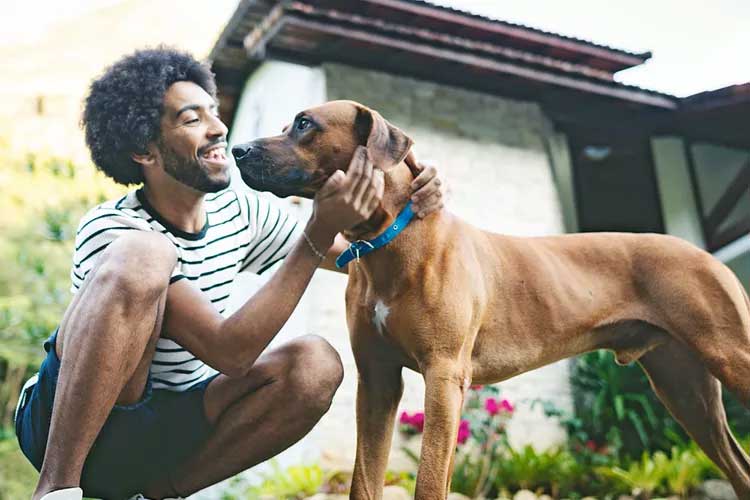
Rhodesian ridgebacks are intelligent and independent thinkers, which, unchecked, can lead to a domineering personality. It's important to begin obedience training as early as possible to establish a workable relationship.
"Training is a process, not a result. I've had some clients get a breed I normally wouldn't have suggested. But they've done their reading, they've done their homework, they've followed instructions and it works out great," Kilcommons says. "There are other people who just blame the dog for being difficult. Dogs learn by their interactions with us. Day-to-day, we have plenty of opportunities to teach the dog what we want it to do. We communicate with words, so our initial praise is usually cursory—they're not going to react to that. They read our facial expressions. You have to smile, you have to praise enthusiastically, and you have to mean it."
Health
The Rhodesian ridgeback is considered a generally healthy breed with a lifespan around 10 years. But like all breeds, the Rhodesian ridgeback is prone to certain diseases. The Rhodesian Ridgeback Club of the United States, the official breed club, requires breeders complete hip and elbow evaluations. The club also strongly recommends additional testing for thyroid conditions, heart conditions, and eye anomalies.Like other large dogs, Rhodesians are also susceptible to bloat, when dogs' stomachs swell and twist or flip, cutting off blood flow to other organs. This is a life-threatening condition, but you can help prevent bloat through a procedure that "tacks" the stomach to your dog's body, keeping it in place. Talk with your veterinarian the come up with the best health plan for your pup.
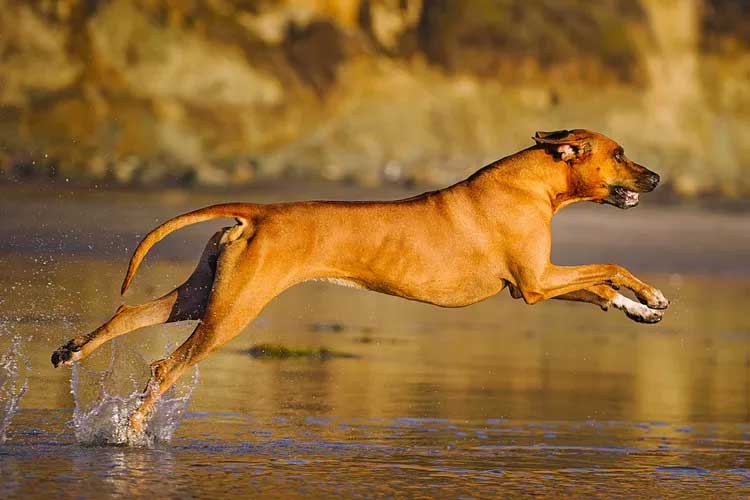
Rhodesian ridgebacks can also have a defect called dermoid sinus, which typically requires surgical intervention. The condition is sometimes present at birth, and reputable breeders and veterinarians will be able to identify it.
Not all Rhodesian ridgebacks will encounter serious health issues, but it's important to be aware of these common concerns when considering this breed. It's important to purchase all dogs from reputable breeders who will introduce you to the dog's parents and siblings. If adopting, ask the rescue for all available health history.
History
Once known as the African lion hound, the Rhodesian ridgeback was in fact once bred to hunt lions, though he was never employed in the kill. Instead, dogs would confront lions and distract them to give the hunter time to fire his weapon. But that's not where this breed's history begins.
In the 16th and 17th centuries, European settlers arrived in southern Africa with their dogs—mastiffs, Great Danes, bloodhounds, and greyhounds. Ill-suited for the drastic temperatures, scarce water, and rough brush, the settlers began breeding their imports with the native Khoikhoi dog, a tribal hunting dog known for the ridge lining its back, according to the Rhodesian Ridgeback Rescue. The result was a strong, fast, intelligent dog who made an excellent hunter.
The breed remained elusive in the United States, and didn't gain popularity until after World War II. Today, Rhodesian ridgebacks are known to be loyal and loving family dogs. It is still a popular breed in its native South Africa, but more rare stateside.
Fun Facts
Go, dog, go: Rhodesian ridgebacks are excellent running partners, even ranking No. 1 on Outside's list of best running dogs. They're fast, too, reaching top speeds of 20–30 mph.Movie star Errol Flynn (of the 1938 film The Adventures of Robin Hood!) was one of the first Rhodesian ridgeback breeders in America. He began breeding the dogs in the 1930s,and kept them on his Hollywood ranch.
Not all Rhodesian ridgebacks have a ridge. According to the Rhodesian Ridgeback Rescue, some dogs lack the mini-mohawk because of a genetic fault. If your puppy doesn't have a ridge, he'll never have one.